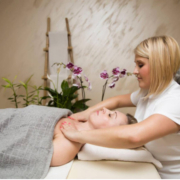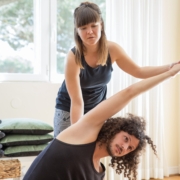The Quiet Movement of Men Embracing Preventative Health
Introduction: A Subtle Shift Toward Preventative Health
Over the past decade, a subtle yet significant shift has taken place in the way men approach their health and well-being. Preventative practices that were once considered unconventional or reserved for select communities are now being widely adopted. From nutrition and exercise to advanced holistic treatments, men are recognizing that proactive care leads to improved longevity, enhanced performance, and a greater sense of balance. This quiet movement highlights a growing cultural emphasis on sustainable health practices and lifestyle choices.
Why Preventative Health Is Gaining Popularity Among Men
Preventative health focuses on addressing potential issues before they escalate into chronic conditions. Unlike reactive care, which deals with illness after it manifests, preventative practices prioritize early intervention. For men, this approach resonates strongly due to several factors:
- Longevity Awareness: Increased life expectancy has emphasized the importance of proactive health.
- Performance-Driven Culture: Careers, athletics, and personal performance goals are driving men to adopt measures that boost stamina and reduce stress.
- Mental Well-Being Priorities: Greater societal openness about mental health has encouraged men to explore holistic therapies that address both body and mind.
Physical Fitness and Preventative Health
Physical exercise remains a cornerstone of preventative strategies. While gym memberships and strength training continue to be popular, many men are also integrating practices such as:
- Functional Training: Movements designed to improve mobility and daily performance.
- Yoga and Pilates: Increasingly embraced for flexibility, stress reduction, and injury prevention.
- Outdoor Activities: Cycling, running, and hiking promote cardiovascular health while reducing mental fatigue.
These choices reflect a broader awareness that fitness should not only enhance appearance but also serve as a long-term health investment.
Nutrition as Preventative Medicine
Men are turning to nutrition as a key pillar of preventative health. Modern approaches emphasize:
- Whole Foods and Clean Eating: Prioritizing fresh, unprocessed meals rich in nutrients.
- Plant-Based Diets: Growing recognition of the role of plant foods in lowering risks of cardiovascular disease.
- Intermittent Fasting: Popular among men seeking metabolic efficiency and sustainable energy levels.
These shifts highlight a departure from quick fixes toward sustainable dietary habits that provide consistent benefits.
Mental Health and Emotional Balance
The rise in awareness surrounding mental health has encouraged men to explore therapies once considered alternative. Practices such as meditation, mindfulness, and counseling have gained mainstream acceptance. Emotional resilience is now seen as a critical aspect of preventative health, reducing risks of burnout, depression, and anxiety.
Holistic Therapies: Blending Tradition and Modernity
In addition to traditional medicine, men are increasingly seeking holistic approaches that emphasize harmony between body and mind. Treatments such as acupuncture, aromatherapy, and therapeutic massage have gained recognition for their ability to complement mainstream health care.
A notable example is London nuru massage, which combines physical relaxation with stress relief, enhancing circulation and promoting mental clarity. This type of therapy has become part of a wider preventative strategy, helping men manage stress before it leads to more serious conditions.
The Role of Preventative Screenings
Preventative screenings play a vital role in identifying early warning signs of disease. Men are becoming more proactive in scheduling check-ups for:
- Blood pressure and cholesterol levels
- Prostate health assessments
- Diabetes and cardiovascular risk factors
Such early interventions empower men to make informed lifestyle changes, significantly reducing long-term health risks.
Technology and Preventative Health
Technology is accelerating the adoption of preventative strategies. Wearable fitness trackers, smartwatches, and health apps are empowering men to monitor their activity levels, sleep quality, and heart health in real time. This data-driven approach allows individuals to make informed adjustments before minor imbalances escalate into health concerns.
Cultural Shifts: From Silence to Openness
Historically, men often avoided discussions around health, particularly preventative care. However, shifting cultural narratives now encourage openness. Public figures, athletes, and professionals are vocal about the benefits of mindfulness, balanced living, and alternative therapies. This openness is normalizing conversations that previously carried stigma.
Workplace Wellness and Preventative Culture
Corporations are playing a pivotal role in promoting preventative health. Wellness programs, flexible work schedules, and access to therapies such as stress-relieving massage services reflect an organizational shift toward prioritizing employee well-being. Men are particularly responsive to these initiatives, as they integrate health practices into daily professional routines.
Holistic Self-Care Beyond the Physical Body
Preventative health is not limited to the body—it extends to self-care practices that foster overall harmony. Men are embracing activities such as journaling, digital detoxes, and mindfulness retreats. These approaches reinforce the importance of mental clarity and resilience in maintaining long-term well-being.
Challenges in Adopting Preventative Health
Despite its growing popularity, several barriers remain:
- Time Constraints: Busy schedules often limit consistency.
- Social Perceptions: Some men still perceive preventative practices as unnecessary or indulgent.
- Access to Services: Not all communities have easy access to holistic therapies and preventative programs.
Overcoming these barriers requires continued awareness, education, and normalization of preventative health choices.
The Future of Men’s Preventative Health
As awareness continues to expand, preventative health is likely to become a defining feature of male wellness culture. The integration of advanced medical screenings, holistic therapies, and technology will foster a proactive generation of men committed to sustainable well-being.
Conclusion: A Movement Quietly Gaining Momentum
The quiet movement of men embracing preventative health represents more than a trend; it signals a lasting cultural shift. From fitness and nutrition to holistic practices like London nuru massage, preventative strategies are reshaping how men view longevity, performance, and balance. By adopting these practices early, men are not only safeguarding their present health but also ensuring a resilient, fulfilling future.


